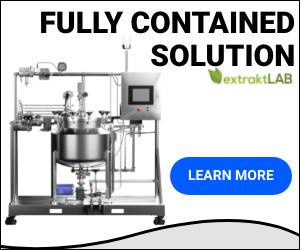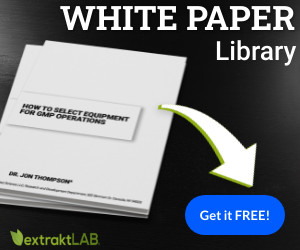One of the costliest factors of operating any extraction business lies in solvent recycling. Depending on the choice of solvent used by a producer, solvent loss could result in just hundreds of dollars; however, other solvents can result in thousands of dollars lost PER DAY. This makes solvent recycling a critical factor for any producer. In this article, we examine solvent recycling with the two most prevalent extraction solvents in the industrial hemp extraction industry to determine which of the two is the smartest option in terms of a very impactive cost driver for producers.
How Many Times Can Solvent Recycling Be Performed With Ethanol?
Though solvents like ethanol can be recycled, there is a limit to how many times it is safe and efficacious to do so. In guidance published by the FDA in 2010, plans for the reuse of solvents must be accompanied by a declaration of the maximum number of times the solvent can be reused. The FDA has recognized that contaminants buildup in the solvent over time as they are recovered and reused
As a consequence, the FDA guidelines recommend that the solvents be brought back to a suitable state before reuse. A suitable reuse is defined by the original specifications for the solvent that is being used.
In keeping with a risk-based approach to process validation, the key risk to address with solvent reuse is cross-contamination. Cross-contamination could happen when a solvent dissolves a low level contaminant from the biomass being extracted. As the solvent is removed, the contaminant can become magnified and concentrated in either the oil or the solvent during solvent recovery. Cross contamination then occurs when a contaminated solvent is used to extract a non-contaminated batch.
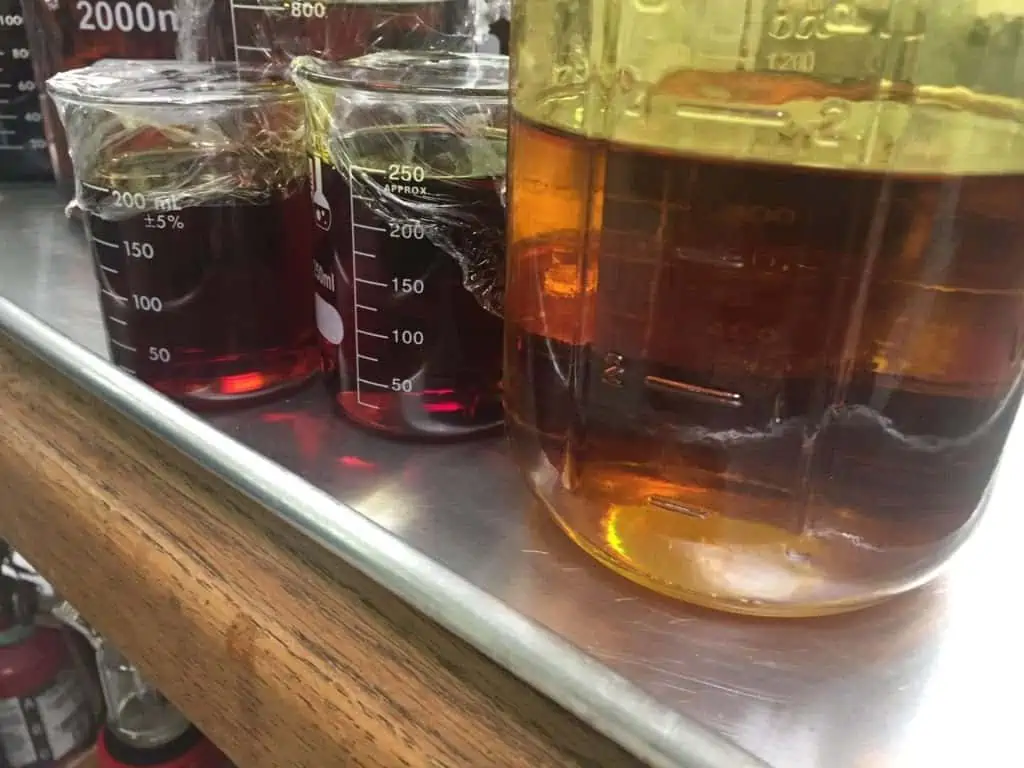
Contaminants are typically identified during incoming inspection but may show up later during processing as the oil becomes more refined. Hemp is typically sampled at receiving by quality assurance and a series of tests are conducted on the hemp biomass in order to determine if the incoming material is contaminated with pesticides, solvents, heavy metals or if it has significant microbial content. Contaminants that are identified in the quality inspection should be tested for build up in the extraction solvent during validation.
Other sources for contamination include carbon black or activated carbon that is typically used in ethanol extraction to remove chlorophyll from the ethanol. Combustion byproducts that are incorporated into the structure of carbon black can dissolve in the ethanol and contaminate.
According to FDA guidelines, the number of times ethanol solvent can be reused must be validated according to a validation protocol. Once the method and process has been validated, the requirements for testing each reuse batch may not be required depending on the risks identified during the validation study.
As a general rule of thumb, a solvent may be reused successfully 20-50 times. Whatever your company’s current practice is, it is important to define the process, validate the process, establish specifications for reuse, and also set up a testing program to measure for contaminants. In all likelihood, a solvent change over is probably in your future and it’s cost should not be neglected in your overall operating cost model.
It is easy to estimate cost of solvent change over as it is the same as the start-up cost:
| Lbs processed per day | Daily requirement of ethanol (gallons) |
Cost per gallon: $16-30/gal food grade $6-8/ gal denatured Calculated at $30/gal |
| 500 | 500-1500 | $15,000-45,000 |
| 1000 | 1000-3000 | $30,000-90,000 |
| 2000 | 2000-6000 | $60,000-180,000 |
| 10000 | 10000-30000 | $300,000-900,000 |
The solvent recycling cost on a 60 day change over cycle can then be estimated on a per year basis:
| Lbs processed per day | Change Over Frequency | Cost of Changeover | Max Annual Cost |
| 500 | 60 days | $15,000-45,000 | $270,000 |
| 1000 | 60 days | $30,000-90,000 | $540,000 |
| 2000 | 60 days | $60,000-180,000 | $1,080,000 |
| 10000 | 60 days | $300,000-900,000 | $5,400,000 |
It is important to insist that unknowns be flagged by your laboratory.
By extension, the solvent testing costs will also be important to address:
| Lbs processed per day | Change Over Frequency | Cost of Testing (pesticides, solvents), Unknowns testing can be 5-10k USD per unknown. |
Max Annual Cost |
| 500 | 60 days | $200-400 | $2,400 |
| 1000 | 60 days | $200-400 | $2,400 |
| 2000 | 60 days | $200-400 | $2,400 |
| 10000 | 60 days | $200-400 | $2,400 |
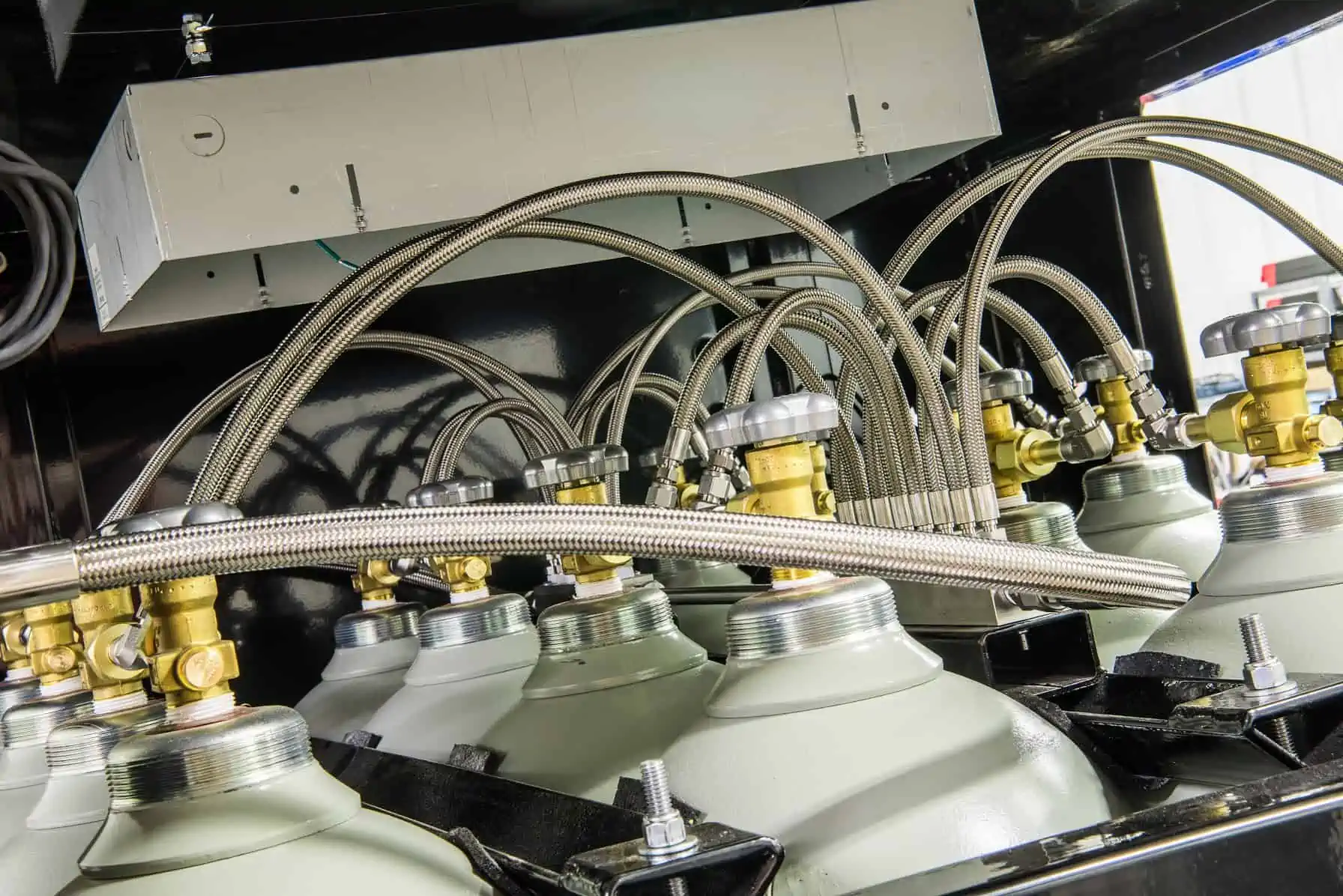
How Many Times Can Solvent Recycling Be Performed With CO2?
Supercritical CO2 extractor continuously add clean CO2 to the process at the beginning of each run. Approximately half of the CO2 is recycled into the next run and half of the CO2 is fresh CO2. This means that the entire amount of CO2 is continuously replaced approximately every two runs.
Some CO2 extraction equipment recycles nearly 100% of the CO2. However, this approach may not be recommended for the following reasons:
Recycling cylinders are typically designed with a single small Inlet and a single small Outlet. This design is typically driven by cost considerations and renders the recycling cylinder impossible to clean. By extension, CO2 expansion tanks that are often installed before the pump become a dead volume that is not swept. We do not deploy these on our pumping systems for the same reasons.
When recycling Co2 via a compressor, terpenes and other contaminants become entrained in the recycling system. These compounds degrade over time and are then introduced to the fresh hemp being extracted. For this reason, we do not recycle 100% of the CO2 using compressive technology.
Large energy-intensive compressors are required for recycling.
Even though extraktLAB CO2 extraction equipment does not recycle 100% of the CO2, we do have a CO2 recycler on the system so that CO2 can be recycled during a single run. That recycler is designed for maximum cleanability.
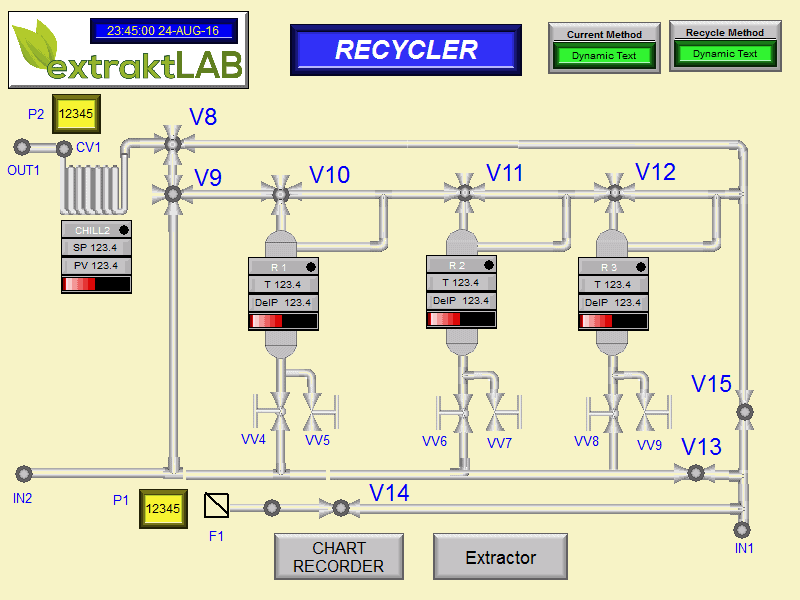
extraktLAB’s supercritical CO2 extractors have built in recycler system for optimal efficiency and cleanability
Both the inlet and the outlet to the recycler cylinder is a large enough diameter to reach your entire arm into the cylinder. It can be cleaned because all of the surfaces are accessible.
extraktLAB does not use energy-intensive compressors to recycle 100% of the CO2. The reason for this is cross contamination avoidance and the fact that CO2 is extremely inexpensive. In fact, solvent loss of CO2 at one ton per day can result in just $211 whereas the same extraction setup with ethanol will result in nearly $4000 – $8000 per day.
Concerned About How Much You’re Spending On Solvent Recycling? We Can Help!
At extraktLAB, we pride ourselves in using a clean and green supercritical CO2 extraction process that is far more cost effective in terms of solvent recycling – and we want the same for you. Give us a call at: 651-600-0036 to get a quote on a supercritical CO2 extractor, or sign up for a free 20-minute CBD Jam Session; an interview with one of our experts to identify your bottlenecks, and where you can improve your extraction business.
